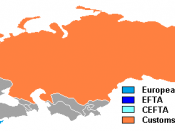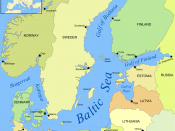Economic Integration of the Baltic Sea Region and the Passenger Traffic Issues Helsingin Yliopisto Baltic Cities August 2000 Christopher Dahlstrand and Devon Webster Table of Contents: I. Introduction 2 II. Goals of Economic Integration 2 III. VASAB 2010 3 IV. ÃÂresund vs. Helsinki - Tallinn Link 4 V. Aviation Development in Scandinavia 7 VI. Conclusion 10 VII. Works Cited 11 I. Introduction Economic integration is not an easy task. This is clearly evident by its nature, and even more so a problem in the Baltic region where there have been so many political changes in recent history. We have seen the formation of three newly re-independent states, Estonia, Latvia, and Lithuania. East and West Germany have been reunited to form a new nation. The communist governments of the former Soviet Bloc have been replaced by democracy. These changes have made economic integration not only more difficult, but also to some degree more necessary.
Europe as a whole is becoming an economically integrated union, mainly in the nations of the European Union, but in non-member nations as well. Perhaps the best example of this phenomenon of economic integration is the introduction of a common European currency, the Euro. This more than anything signifies the changes and levels of increasing co-operation between European Union nations. A second example could be the creation of a common trade zone, with the creation of a common tax base and the abolition of import-export fees, and the creation of the 'common European market,' where business effectively get to treat the entire European Union as one state.
Because economic integration has been a major issue in the new EU, there have been long lasting effects on the Baltic Sea region. For the purposes of this essay, we have chosen to examine the impacts of economic integration...


